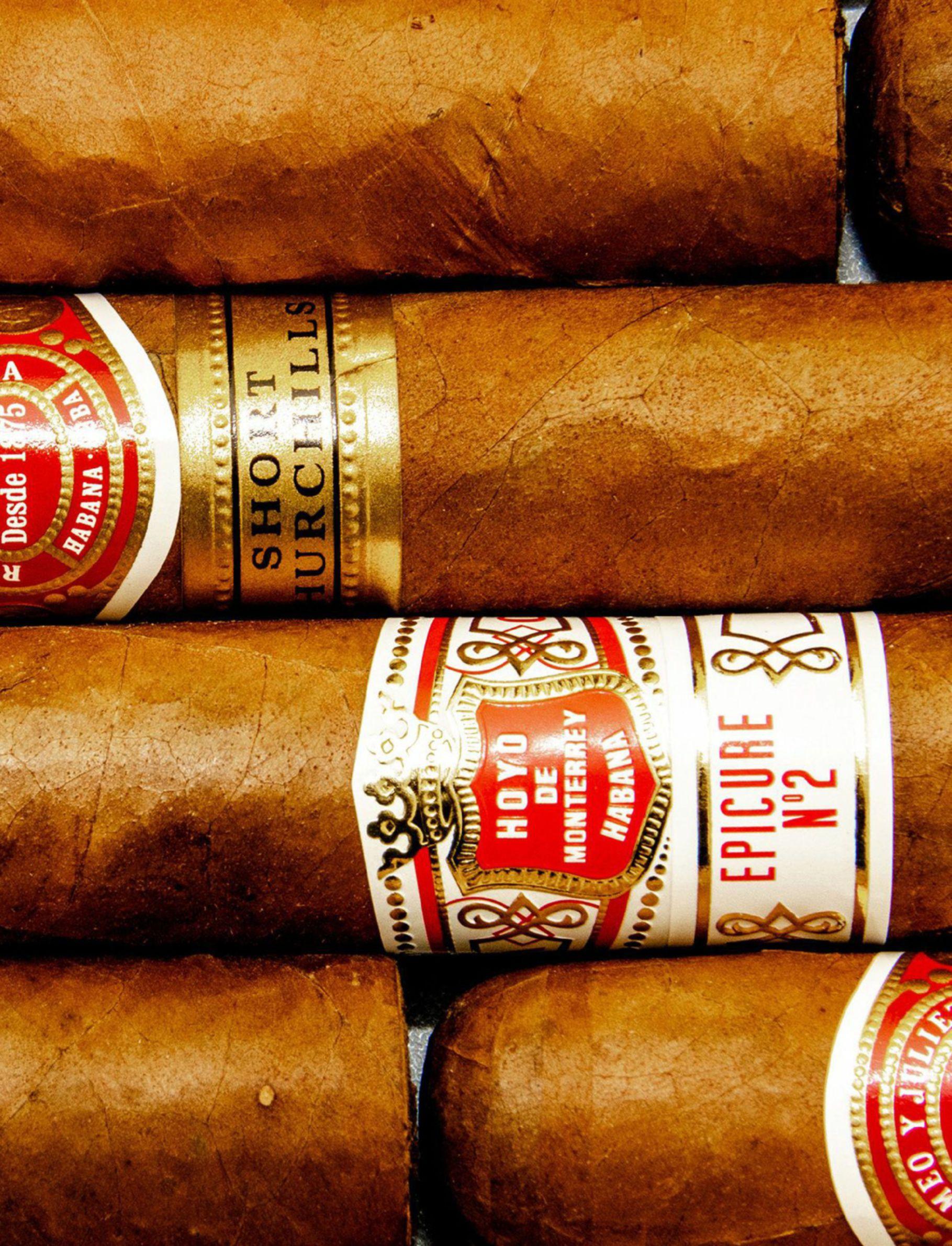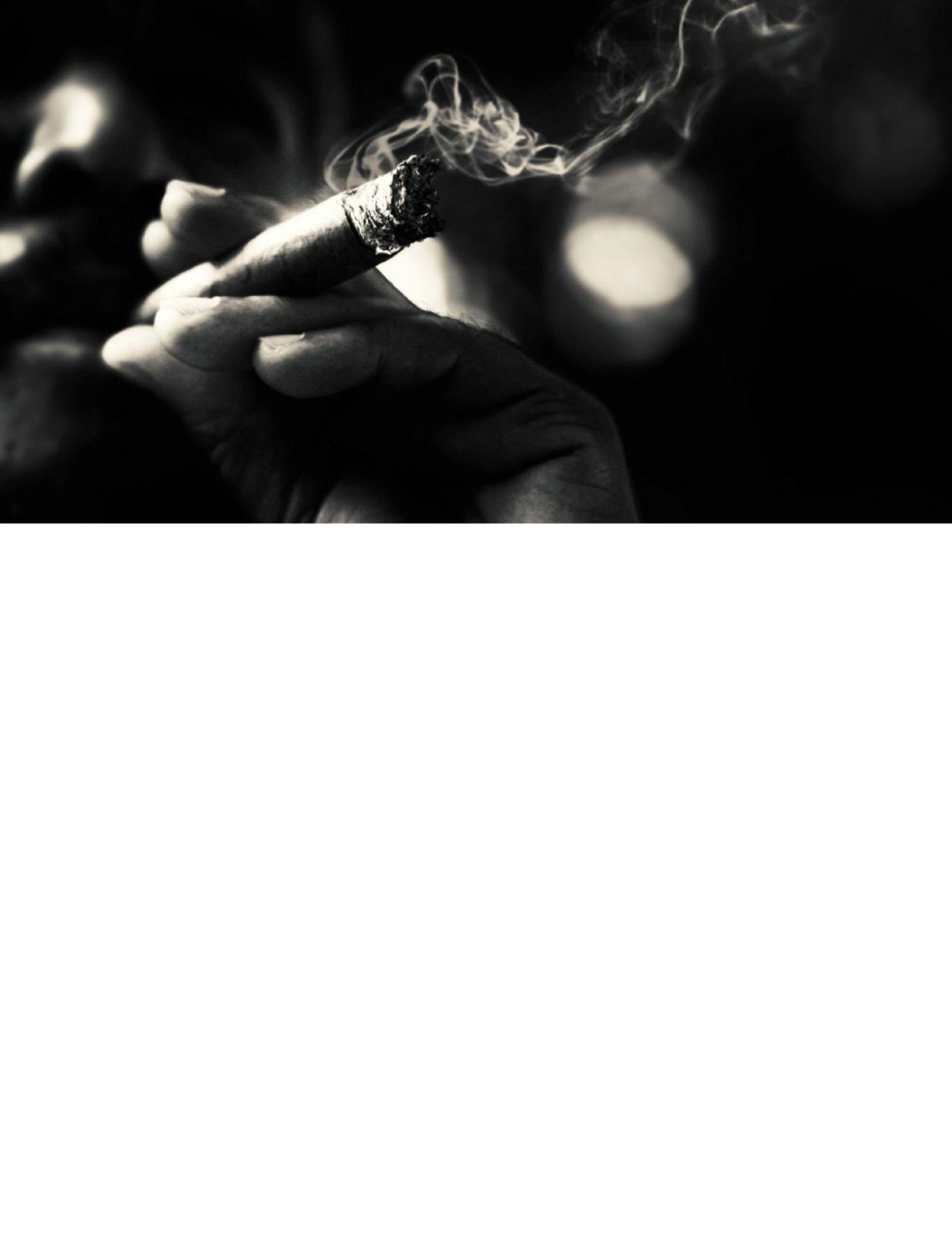
7 minute read
PHILOSOPHY OF PLEASURE
Sometimes a Cigar Is a Just a Cigar

I only recently came to smoking cigars as a neardaily habit. I’ve enjoyed them in the past, but with all the extra time on my hands during pandemic lockdown, I finally had the chance to get “into” them. That has meant lots of research on what makes a good cigar—the various tobacco leaves and wrapper types, the countries of origin, size and shape, the heralded brands—followed by sampling a wide variety to figure out my preferences and which cigars hit the mark. Then there are the cigar accessories you need for the full experience: cutter, lighter, ashtray and humidor. As with any hobby, people seek out ways to personalize it, to reflect other parts of their personality and interests in the thing they love. As such, you can find a lot of custom variations on humidors, lighters and the like. I didn’t think much of it when I saw a picture online of a humidor and ashtray set painted with the image of Marlon Brando as Vito Corleone in The Godfather, smoking a cigar, except that maybe it was the ideal humidor for me given I love The Godfather (original, I know). I didn’t think much of it again later when I came across some fan art depicting Vito in his iconic tuxedo, holding a lit cigar in his hand as the smoke rises above him. It all made sense. I could see the scene at the very beginning of the film, with Vito holding court in his office as he grants favors on the day of his daughter’s wedding, quietly reflective yet still imposing and menacing. It wasn’t until I was smoking a cigar myself a few days later that I realized something was off about it all: Vito never smoked.
At least not in Part I. Young Vito, played by Robert De Niro in Part II, can be seen with a small cigar a few times, but the older version’s only vice is wine. The fan art with Brando’s visage is the work of pure imagination. I’ve seen the films dozens of times, but nothing struck me as off about these fan-created images. It seemed natural. Gangsters are always smoking cigars on television and in film: Tony Soprano in The Sopranos, nearly everyone in Goodfellas, both the 1932 and 1983 versions of Scarface and so on. Indeed, when Francis Ford Coppola tricked Brando into a screen test for The Godfather role, among the props he brought with him were cigars. Gangsters and cigars go hand in hand. It doesn’t require a semester of a gender studies course to understand why this is. Cigar smoking has long been associated with a brand of masculinity neatly embodied in the gangster archetype. Hardened, stoic, a bit frightening. A cigar in hand, or expertly held in your teeth, becomes less about enjoyment of tobacco and more a statement on the kind of man you are. Cigar smokers are bosses, titans of industry, no nonsense, powerful. Fuck with them at your own peril. I can’t say how much this idea of the cigar smoker factors into the appeal for me, but it certainly isn’t zero. There’s something to feeling like I’m only a cut, light and draw away from the type of power that rules nations, big and small. I know, too, that this association is part of the reason it has taken
In the first column of me so long to cultivate cigars as a hobby. My first cigar-smoking our new Philosophy of experience was almost a decade ago, after a chance encounter on a Brooklyn sidewalk with the founder of a website I was freelancing
Pleasure series, New for at the time. He took me to a cigar lounge—one he said was frequented by Al Sharpton—and walked me through the ritual. Even York Times best-selling with help, it took me a while to get it properly lit, then for an hour author Mychal Denzel or so I made the rookie mistake of tapping the ash as if it were a cigarette. (Don’t tap the ash; one sign of a well-made cigar is that
Smith writes on the it will hold the ash as you smoke it down, and it also serves to keep the cigar from burning too hot, allowing you a longer smoke time). complexity and sim- Still, I enjoyed it. I never thought I would be a smoker, scared plicity one can find in a as I was by my grandfather dying from lung cancer, but I couldn’t deny it was one of the more relaxing activities of my young, stress long drag of a cigar ful life as a broke freelancer. I hated the lounge, though. The atmosphere was pleasant enough—low lighting and comfy booths—but the clientele irked me. It would be the same at all the cigar lounges I’d visit over the next several years, whenever I got the taste for a cigar: smoky rooms where James Bond films played on a loop, filled with men who were, or imagined themselves to be, the right-

ful inheritors of wealth, power and status. Men in khaki pants and tacky blazers who made money off the misery of others and still were able to sleep at night. My trips to cigar lounges were infrequent because I feared accidentally falling into conversation with one of these men and ruining a perfectly good cigar in the process.
It may seem as though I’m a harsh judge, and I admit that I am, but I’m also an eavesdropper and I’m only reporting what I heard. For a long time, I thought the cigar lounge was the only place I could go for a cigar, so I went only for special occasions or when the pull of the tobacco was too strong to deny.
Only recently did I get the notion that I could simply buy a cigar, learn to cut and light it and luxuriate in the pleasures of smoking all by myself. And that’s what I do, sitting on the fire escape of my New York City apartment, getting lost in the blue-tinted smoke forming curlicues off the cigar’s foot. I’ve developed an affinity for anything that comes from Padrón, Oliva or Liga Privada, especially when they have a maduro wrapper, which tends to carry notes of chocolate, coffee and sweet cedar. They can be a little spicy, too, particularly when (like all Padróns) they are made from 100% Nicaraguan tobacco. When those flavors are expertly balanced and the draw is full-bodied and the burn immaculate (like every Padrón I’ve ever had), it’s a full sensory experience.
On my fire escape, cigar in hand, I don’t imagine myself powerful. I know I’m not. But I am taking time for my mind to clear, to find peace amid the chaos, trauma and numbness of living through a global pandemic. It’s meditation.
There are, rather obviously, other things I could do to achieve this— light some incense, drink a cup of tea, take a bath, do yoga, actually meditate—and they would all be better for my long-term health than smoking cigars. I drink plenty of tea, but the proximity to death makes cigar smoking all the more alluring. It is our greatest unknown, and my biggest fear, but when I’m holding the smoke in my mouth, contemplating the potential harm it is causing, I’m able to make peace with its coming. I don’t want to die, but it is inevitable, and fear of it has filled my body with anxiety for decades. For an hour or so, the cigar releases me.
Not all my thoughts are so morbid, or else I don’t think I would smoke daily. But considering the end, wrapped in the billowing cigar smoke, gives me the space to think about the statement I want to make about the kind of man I’d like to be while I’m still here.











